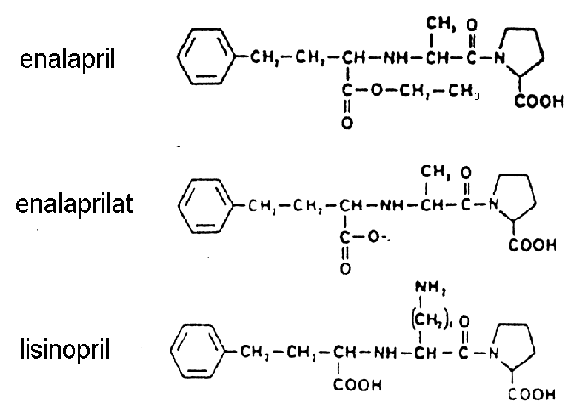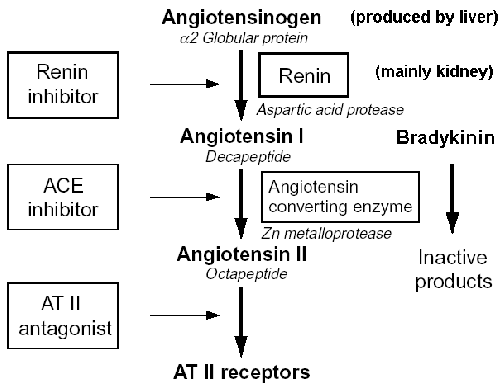Side effects:
- Hypotension: need to get the dose right, especially in combination with
diuretics.
- Dry cough: probably due to bradykinin - use ATII receptor antagonists
instead.
- Renal failure if the renal arteries are partially blocked.
- Hyperkalaemia: complication of renal failure.
- Rashes, taste disturbance, neutropenia, proteinuria - seen mainly at
high doses, may result from the sulphydryl group.
Alternative ACE inhibitors lack the sulphydryl group

It is now recognised that there are at least three potential
drug targets within the renin angiotensin system:

Here is the X-ray structure of human renin binding a
transition state analog inhibitor that is not initially visible. The structure
shown below was originally reported by Rahuel et al (1991) J. Struct. Biol.
107, 227.
In addition to the systemic effects of angiotensin, there
exist local renin angiotensin systems within many tissues that are involved in
growth and microvascular regulation.
Crackower et al (2002) Nature 417, 822 - 828 report on a second
angiotensin converting enzyme, ACE2 which is a carboxypeptidase that removes
single amino acids from both angiotensin I and angiotensin II. ACE2 apparently
reduces the concentration of angiotensin II and antagonises the actions of ACE.
Gene knockout mice lacking ACE2 have superficially normal blood pressure, but
develop severe cardiac abnormalities, that are not seen in double knockout
animals, lacking both ACE and ACE2. These investigators suspect that this is due
to the unrestrained local action of ACE within cardiac muscle.
|